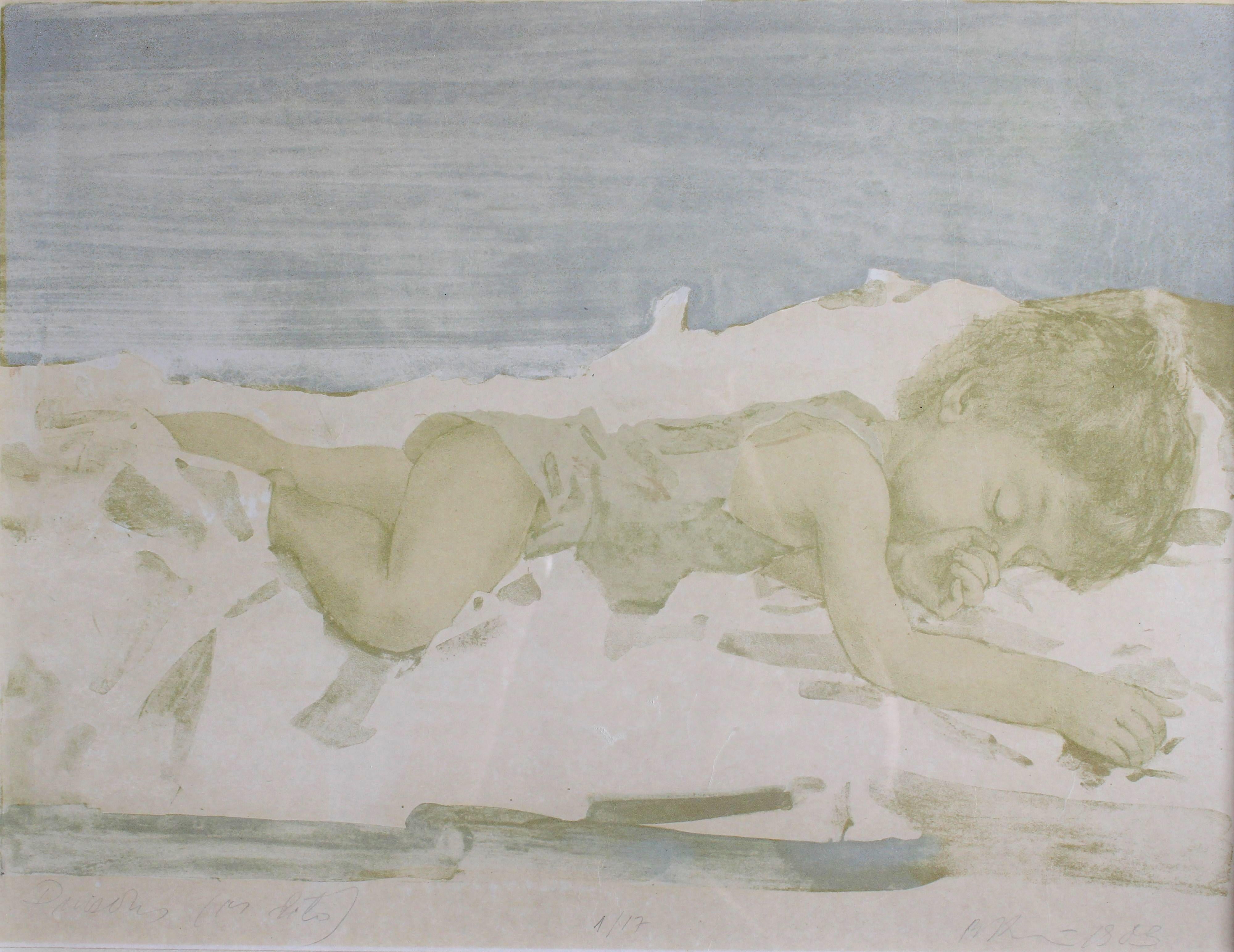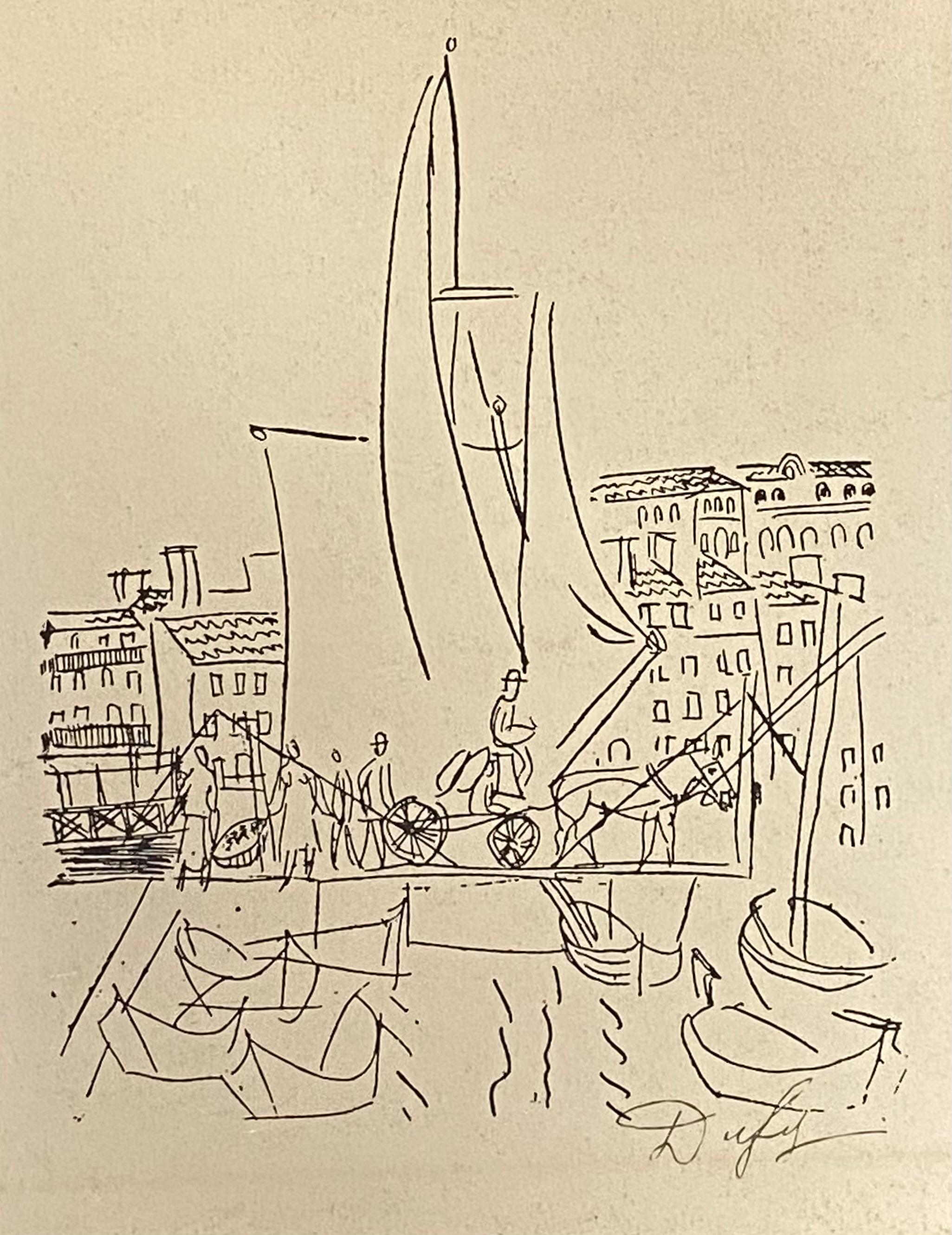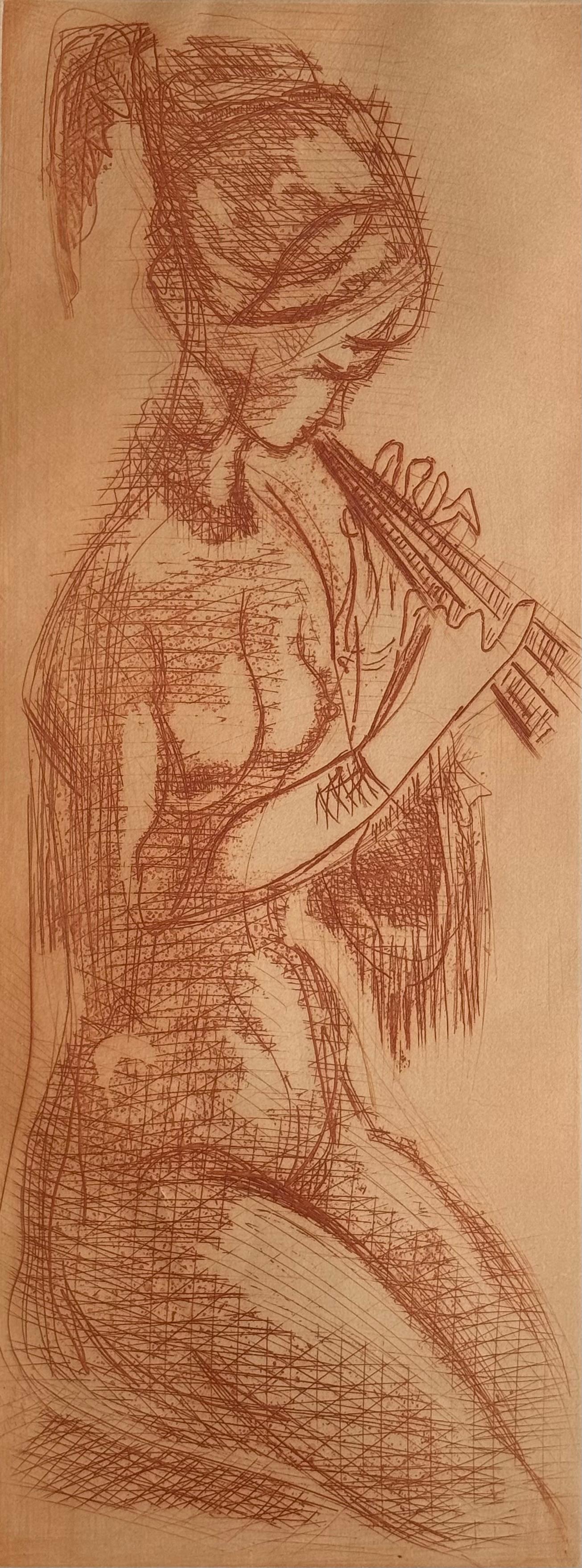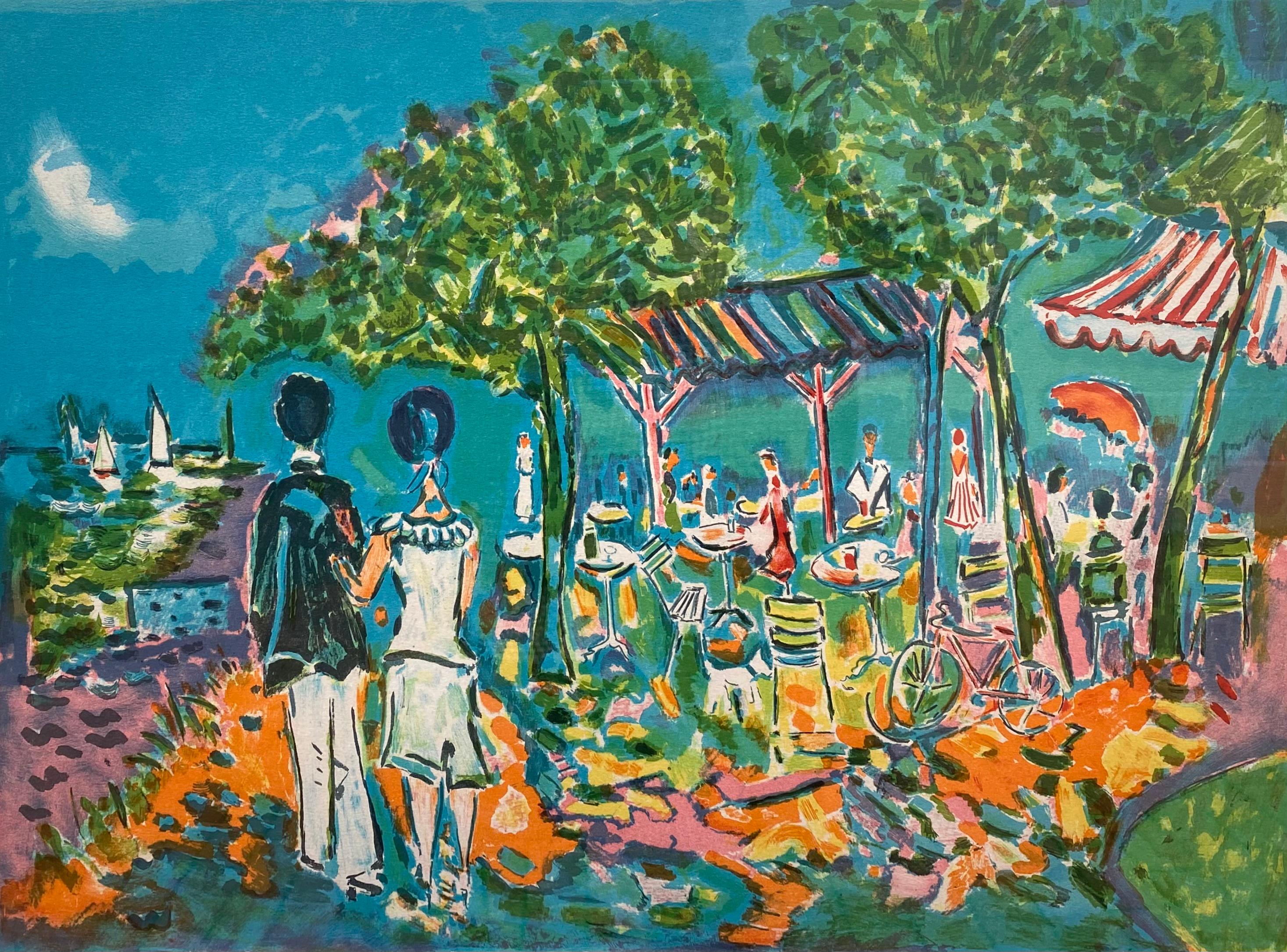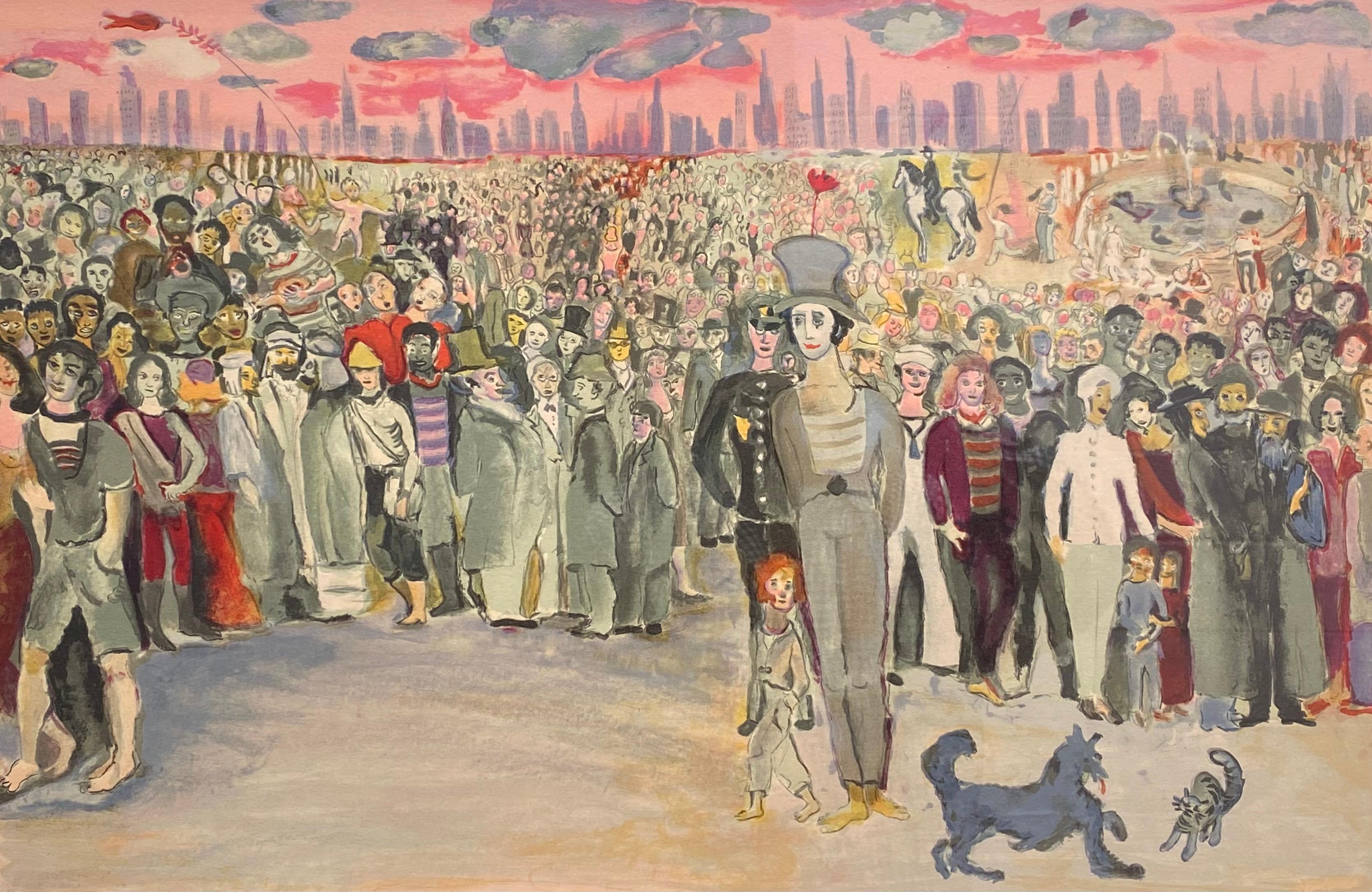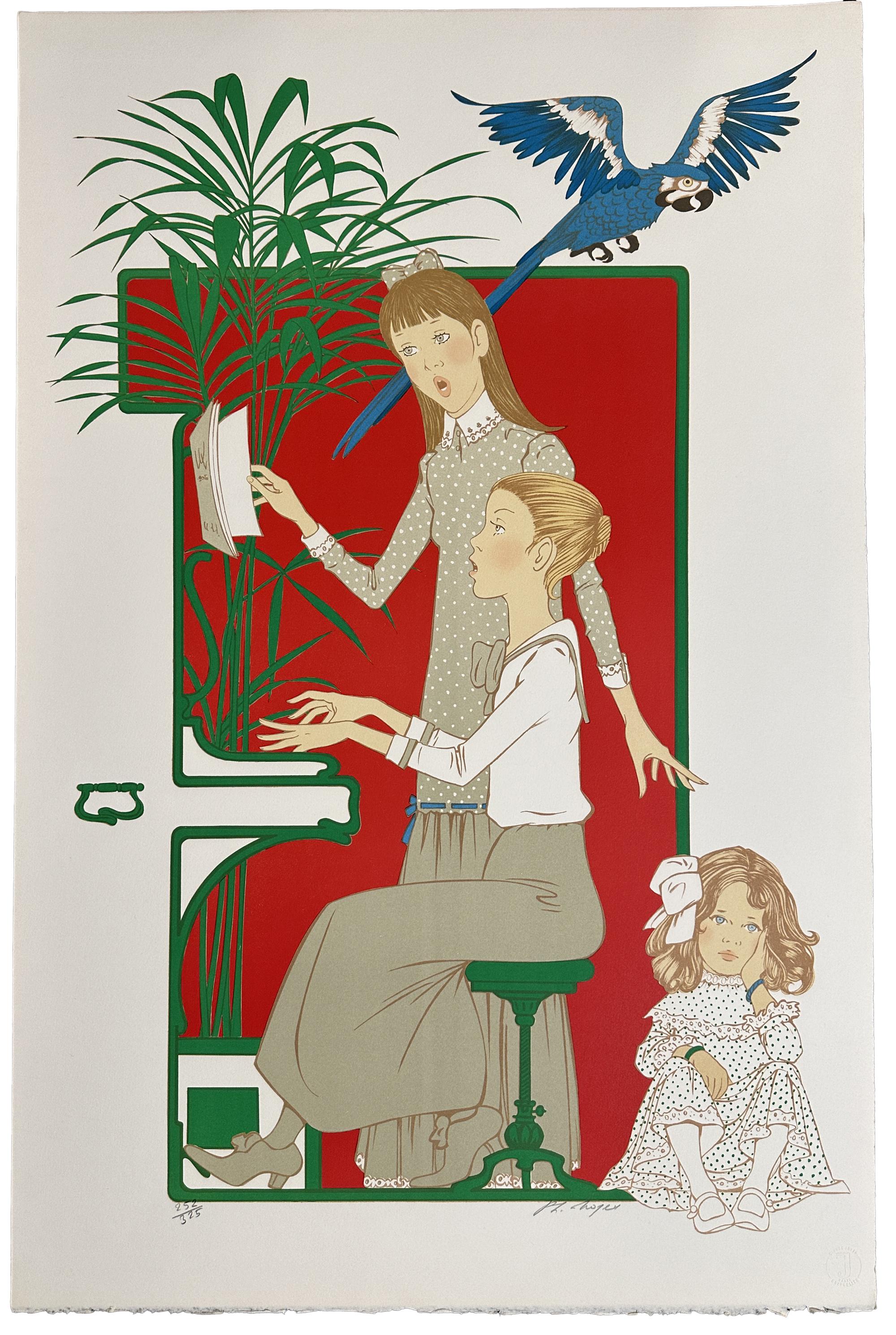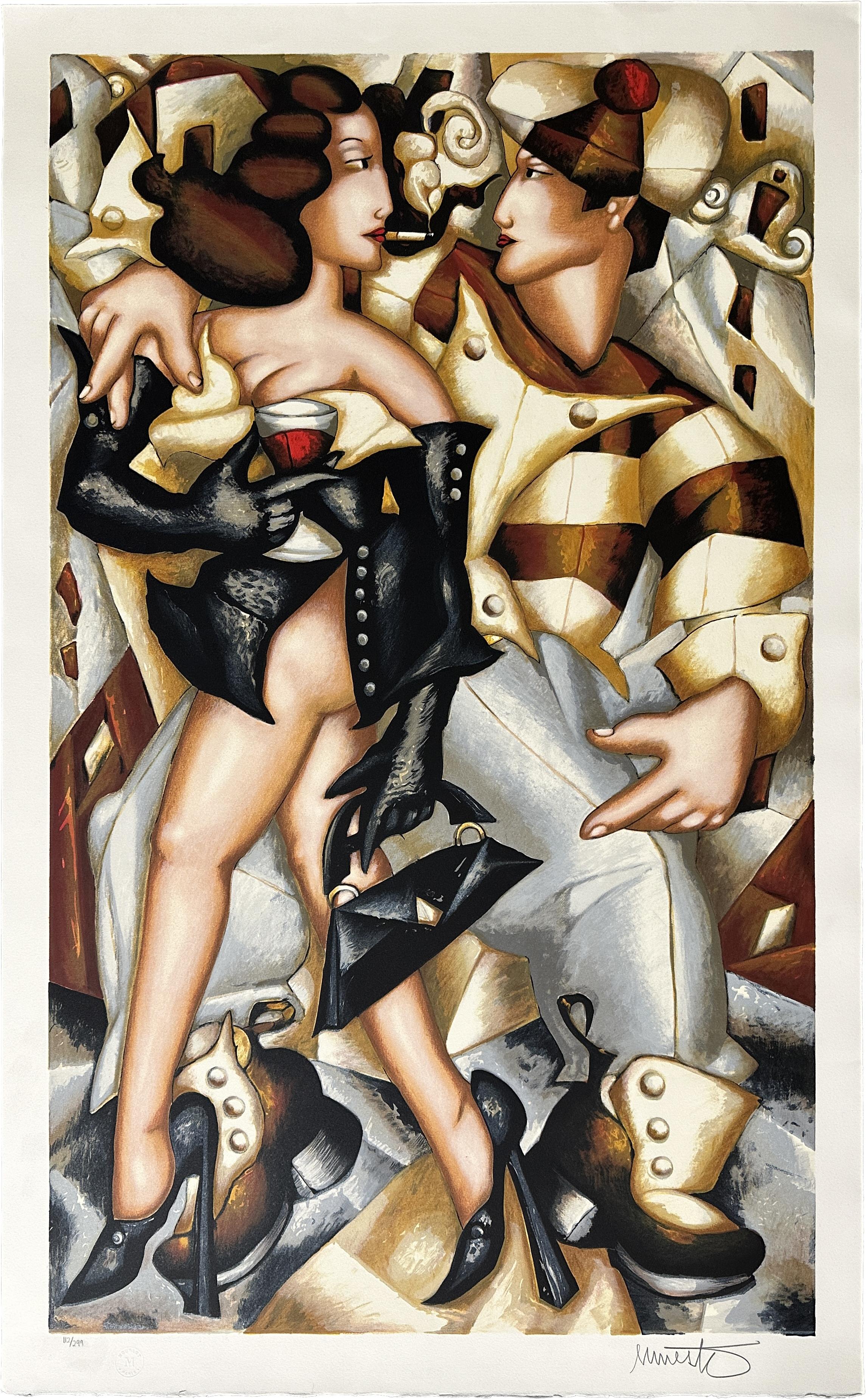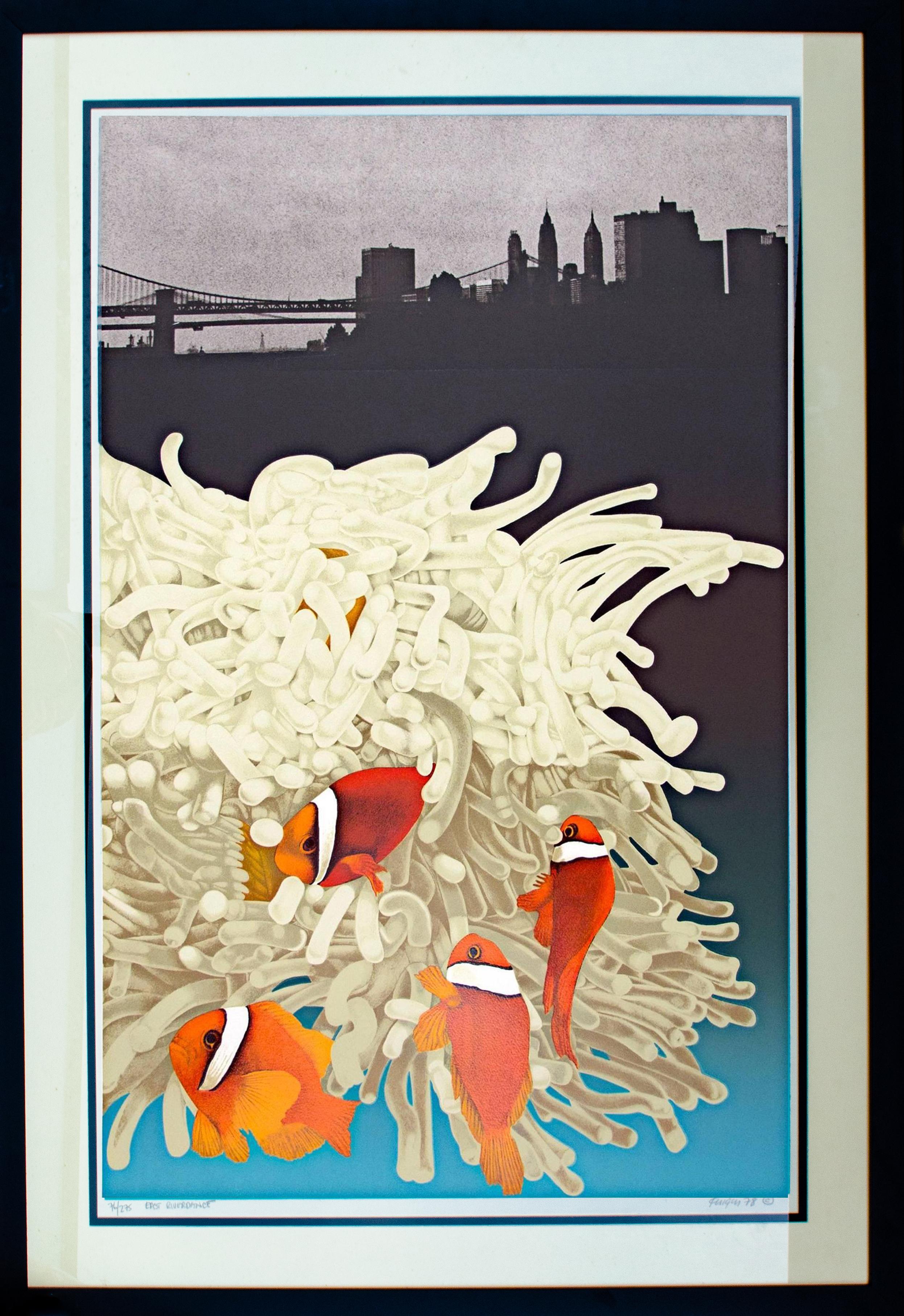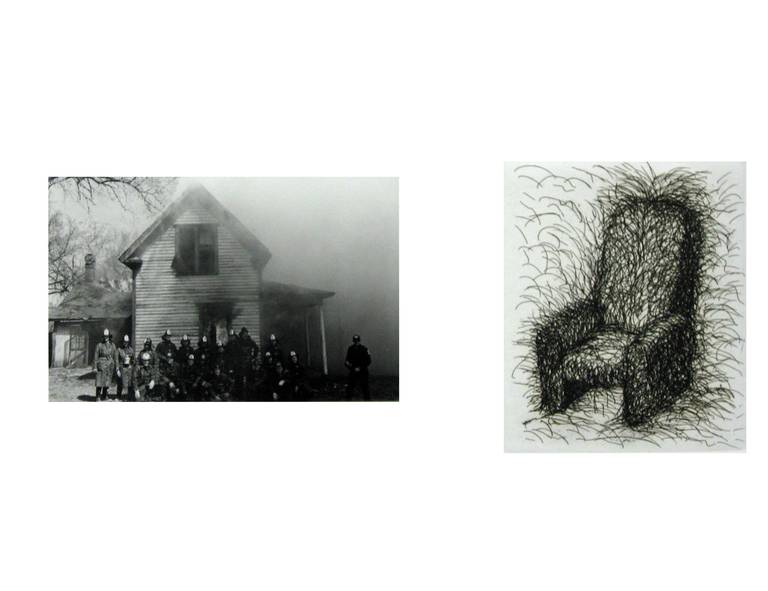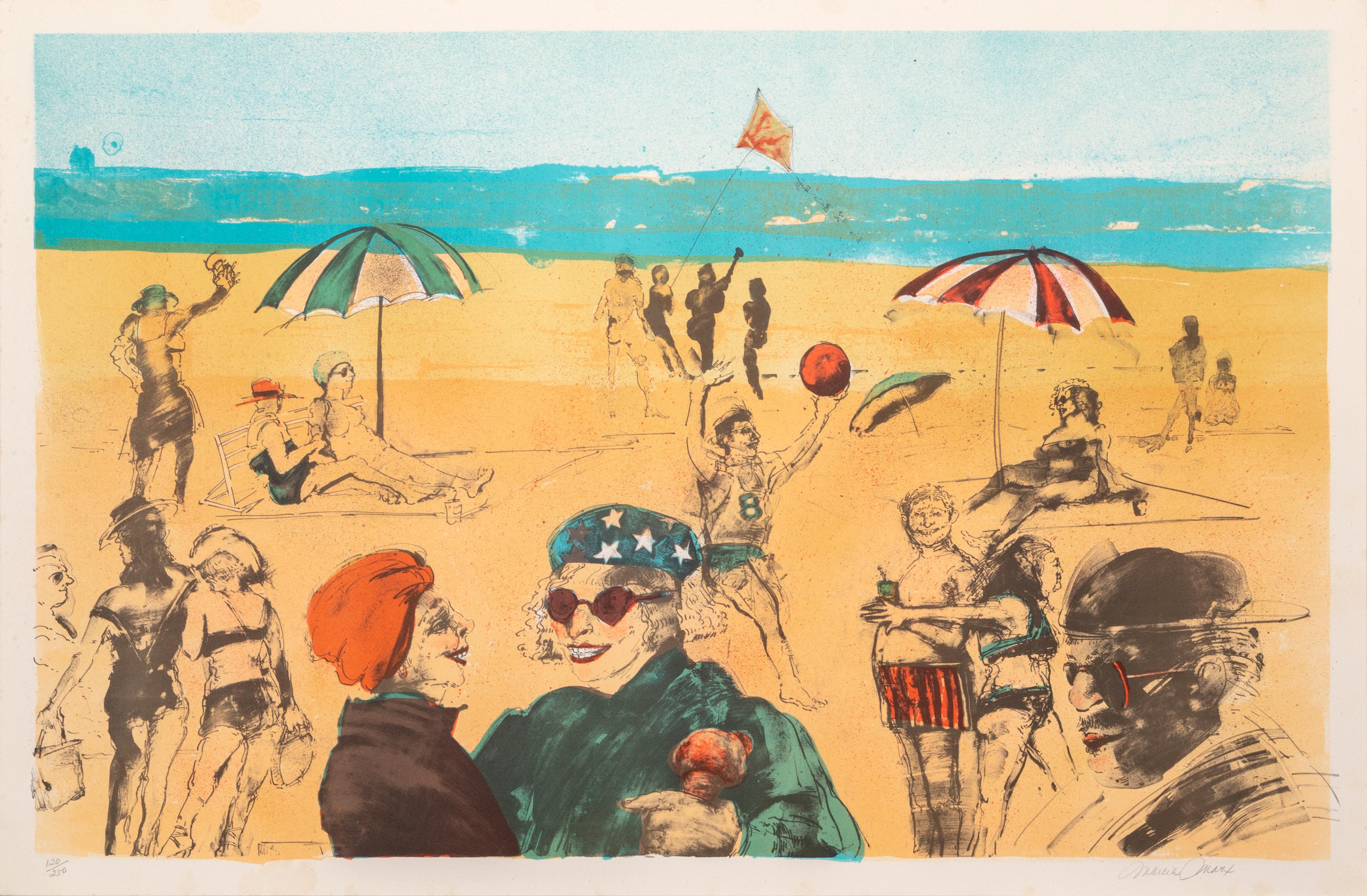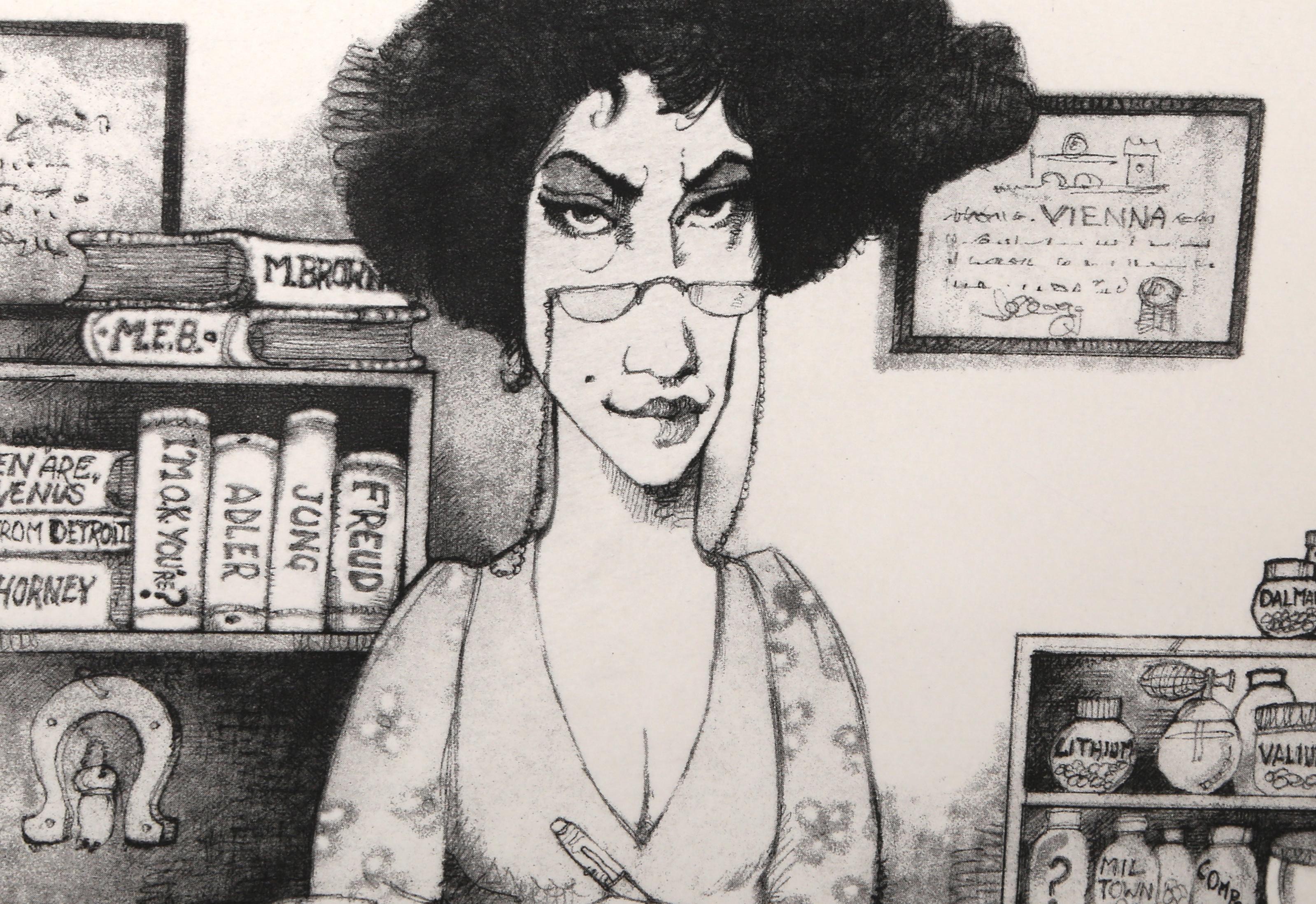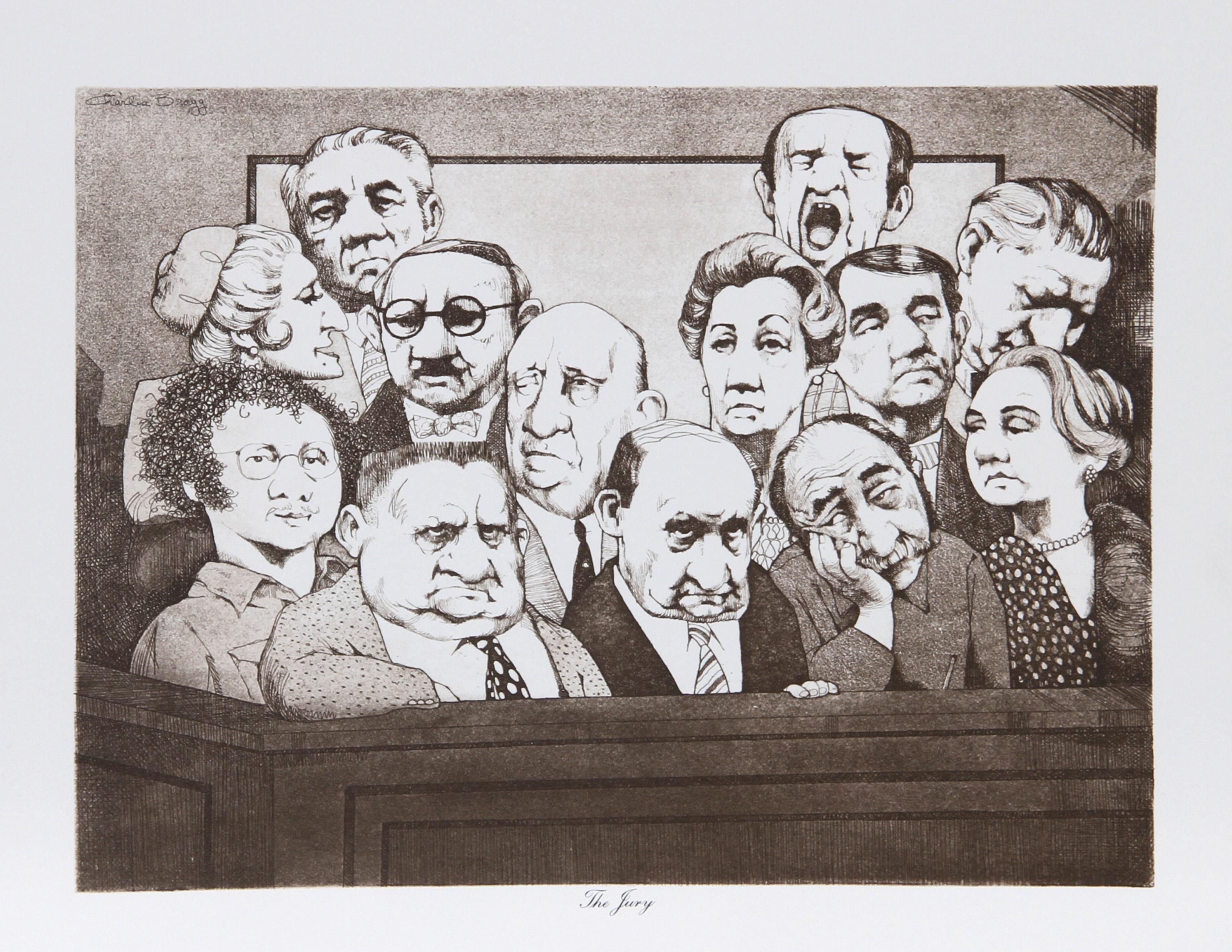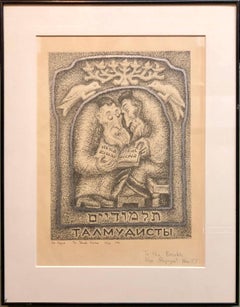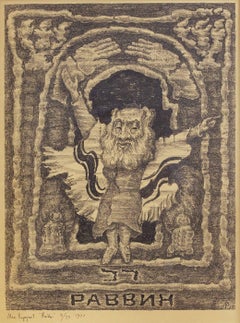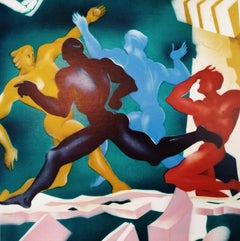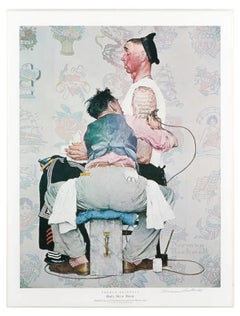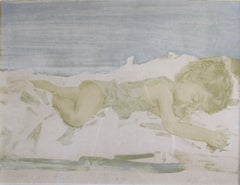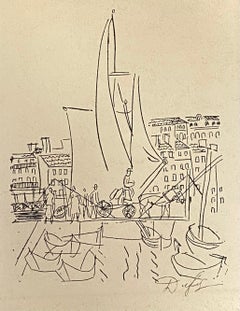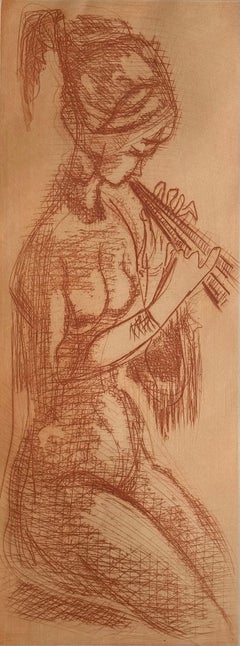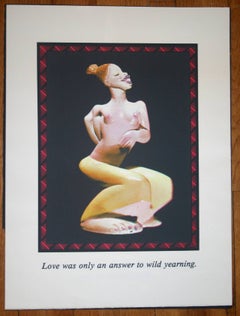
Love was only an answer to wild yearning.
View Similar Items
Want more images or videos?
Request additional images or videos from the seller
1 of 7
Gail RubiniLove was only an answer to wild yearning.
$700List Price
About the Item
- Creator:Gail Rubini (American)
- Dimensions:Height: 25.38 in (64.47 cm)Width: 19 in (48.26 cm)
- Movement & Style:
- Period:
- Condition:
- Gallery Location:Surfside, FL
- Reference Number:1stDibs: LU382180322
About the Seller
4.9
Platinum Seller
Premium sellers with a 4.7+ rating and 24-hour response times
Established in 1995
1stDibs seller since 2014
1,777 sales on 1stDibs
Typical response time: 1 hour
Authenticity Guarantee
In the unlikely event there’s an issue with an item’s authenticity, contact us within 1 year for a full refund. DetailsMoney-Back Guarantee
If your item is not as described, is damaged in transit, or does not arrive, contact us within 7 days for a full refund. Details24-Hour Cancellation
You have a 24-hour grace period in which to reconsider your purchase, with no questions asked.Vetted Professional Sellers
Our world-class sellers must adhere to strict standards for service and quality, maintaining the integrity of our listings.Price-Match Guarantee
If you find that a seller listed the same item for a lower price elsewhere, we’ll match it.Trusted Global Delivery
Our best-in-class carrier network provides specialized shipping options worldwide, including custom delivery.More From This Seller
View AllThe Talmudists Post Soviet Non Conformist Avant Garde Judaica Lithograph
By Alek Rapoport
Located in Surfside, FL
Dimensions w/Frame: 18.5 X 14.5
Alek Rapoport (November 24, 1933, Kharkiv, Ukraine SSR – February 4, 1997, San Francisco) was a Russian Nonconformist artist, art theorist and teacher.
Alek Rapoport spent his childhood in Kiev (Ukraine SSR). During Stalin's "purges" both his parents were arrested. His father was shot and his mother spent ten years in a Siberian labor camp. Rapoport lived with his aunt. At the beginning of World War II, he was evacuated to the city of Ufa (the Bashkir Autonomous Soviet Socialist Republic). A time of extreme loneliness, cold, hunger and deprivation, this period also marked the beginning of Rapoport's drawing studies.
After the war, Rapoport lived in Chernovtsy (Western Ukraine), a city with a certain European flair. At the local House of Folk Arts, he found his first art teacher, E.Sagaidachny (1886–1961), a former member of the nonconformist artist groups Union of the Youth (Soyuz Molodyozhi) and Donkey's Tail, popular during the 1910s–1920s. His other art teacher was I. Beklemisheva (1903–1988). Impressed by Rapoport's talent, she later (1950) organized his move to Leningrad, where he entered the famous V.Serov School of Art (the former School of the Imperial Society for the Promotion of Arts, OPKh, later the Tavricheskaya Art School).
His association with this school lasted eight years, first as a student, and then, from 1965 to 1968, as a teacher. With "Socialist realism" the only official style during this time, most of the art school's faculty had to conceal any prior involvement in non-conformist art movements. Ya.K.Shablovsky, V.M.Sudakov, A.A.Gromov introduced their students to Constructivism only through clandestine means.
(1959–1963) Rapoport studied stage design at the Leningrad Institute of Theater, Music and Cinema under the supervision of the famous artist and stage director N.P.Akimov. Akimov taught a unique course based on theories of Russian Suprematism and Constructivism, while encouraging his graduate students to apply their knowledge to every field of art design. Despite differences in personal artistic taste with Akimov, who was drawn to Vermeer and Dalí, Rapoport was influenced by Akimov's personality and liberalism, as well as the logical style of his art.
In 1963, Rapoport graduated from the institute. His highly acclaimed MFA work involved the stage and costume design for I.Babel's play Sunset. In preparation, he traveled to the southwest regions of the Soviet Union, where he accumulated many objects of Judaic iconography from former ghettos, disappearing synagogues and old cemeteries. He wandered Odessa in search of Babel's characters and the atmosphere of his books.
He organized a new liberal course in technical aesthetics, introducing his students to Lotman's theory of semiotics, the Modulor of Le Corbusier, the Bauhaus school, Russian Constructivism, Russian icons and contemporary Western art. As a result of his "radicalism," Rapoport was fired for "ideological conspiracy."
He sought to cultivate himself as Jewish artist. This became particularly noticeable after the Six-Day War, when the Israeli victory led intellectuals, including the Jewish intelligentsia, to feel a heightened interest in Jewish culture and its Biblical roots. Rapoport's works of this period include Three Figures, a series of images of Talmudic Scholars, and works dealing with anti-Semitism. In the 1970s Rapoport joined the non-conformist movement, which opposed the dogmas of "Socialist realism" in art, along with Soviet censorship. The movement sought to preserve the traditions of Russian iconography...
Category
1970s Post-Modern Figurative Prints
Materials
Lithograph
The Rabbi 1977 Soviet Non Conformist Avant Garde Print
By Alek Rapoport
Located in Surfside, FL
Dimensions w/Frame: 25 3/4" x 20 3/4"
Alek Rapoport (November 24, 1933, Kharkiv, Ukraine SSR – February 4, 1997, San Francisco) was a Russian Nonconformist artist, art theorist and teacher.
Alek Rapoport spent his childhood in Kiev (Ukraine SSR). During Stalin's "purges" both his parents were arrested. His father was shot and his mother spent ten years in a Siberian labor camp. Rapoport lived with his aunt. At the beginning of World War II, he was evacuated to the city of Ufa (the Bashkir Autonomous Soviet Socialist Republic). A time of extreme loneliness, cold, hunger and deprivation, this period also marked the beginning of Rapoport's drawing studies.
After the war, Rapoport lived in Chernovtsy (Western Ukraine), a city with a certain European flair. At the local House of Folk Arts, he found his first art teacher, E.Sagaidachny (1886–1961), a former member of the nonconformist artist groups Union of the Youth (Soyuz Molodyozhi) and Donkey's Tail, popular during the 1910s–1920s. His other art teacher was I. Beklemisheva (1903–1988). Impressed by Rapoport's talent, she later (1950) organized his move to Leningrad, where he entered the famous V.Serov School of Art (the former School of the Imperial Society for the Promotion of Arts, OPKh, later the Tavricheskaya Art School).
His association with this school lasted eight years, first as a student, and then, from 1965 to 1968, as a teacher. With "Socialist realism" the only official style during this time, most of the art school's faculty had to conceal any prior involvement in non-conformist art movements. Ya.K.Shablovsky, V.M.Sudakov, A.A.Gromov introduced their students to Constructivism only through clandestine means.
(1959–1963) Rapoport studied stage design at the Leningrad Institute of Theater, Music and Cinema under the supervision of the famous artist and stage director N.P.Akimov. Akimov taught a unique course based on theories of Russian Suprematism and Constructivism, while encouraging his graduate students to apply their knowledge to every field of art design. Despite differences in personal artistic taste with Akimov, who was drawn to Vermeer and Dalí, Rapoport was influenced by Akimov's personality and liberalism, as well as the logical style of his art.
In 1963, Rapoport graduated from the institute. His highly acclaimed MFA work involved the stage and costume design for I.Babel's play Sunset. In preparation, he traveled to the southwest regions of the Soviet Union, where he accumulated many objects of Judaic iconography from former ghettos, disappearing synagogues and old cemeteries. He wandered Odessa in search of Babel's characters and the atmosphere of his books.
He organized a new liberal course in technical aesthetics, introducing his students to Lotman's theory of semiotics, the Modulor of Le Corbusier, the Bauhaus school, Russian Constructivism, Russian icons and contemporary Western art. As a result of his "radicalism," Rapoport was fired for "ideological conspiracy."
He sought to cultivate himself as Jewish artist. This became particularly noticeable after the Six-Day War, when the Israeli victory led intellectuals, including the Jewish intelligentsia, to feel a heightened interest in Jewish culture and its Biblical roots. Rapoport's works of this period include Three Figures, a series of images of Talmudic Scholars, and works dealing with anti-Semitism. In the 1970s Rapoport joined the non-conformist movement, which opposed the dogmas of "Socialist realism" in art, along with Soviet censorship. The movement sought to preserve the traditions of Russian iconography and the Constructivist/Suprematist style of the 1910s. Despite the authorities' persecutions of nonconformist artists (including arrests, forced evictions, terminations of employment, and various forms of routine hassling), they united in a group, "TEV – Fellowship of Experimental Exhibitions." TEV's exhibitions proved tremendously successful.
In the same period, Rapoport became one of the initiators of another anti-establishment group, ALEF (Union of Leningrad's Jewish Artists). In the United States this group was known as "Twelve from the Soviet Underground." Rapoport's involvement with this group increased tension with the authorities and attracted KGB scrutiny, including "friendly conversations," surveillance, detentions and house arrests. It became increasingly dangerous for him to live and work in the USSR. In October 1976, Rapoport with his wife and son were forced to leave Russia.
In Italy, Rapoport exhibited at the Venice Biennale, "La Nuova Arte Sovietica-Una prospettiva non-ufficiale" (1977), participated in television programs about nonconformist art in the Soviet Union, and created lithographic works continuing his theme of Jewish characters from Babel's play Sunset.
In 1977, Rapoport's family was granted U.S. immigration status and settled in San Francisco. a significant event in Rapoport's life occurred in his meeting with San Francisco gallery owner Michael Dunev, who became his friend and representative, organizing all his exhibitions until the artist's death.
Toward the end of the 1980s and beginning of the 1990s, Rapoport completed his most ambitious works on the theme of the Old Testament prophets: Samson Destroying the House of the Philistines (1989), Lamentation and Mourning and Woe (1990), the four paintings Angel and Prophets (1990–1991) and Three Deeds of Moses (1992).
In 1992, the artist's friends in St. Petersburg organized the first exhibition of his works there since his departure into exile, with works patiently gathered from collectors and art museums. This exhibition, held in the City Museum of St. Petersburg and accompanied by headlines such as "A St. Petersburg artist returns to his town," was followed by much larger ones in 1993 (St. Petersburg and Moscow), organized in collaboration with Michael Dunev Gallery under the name California Branches – Russian Roots.
He Exhibited in "Soviet Artists, Jewish Themes...
Category
1970s Post-Modern Figurative Prints
Materials
Lithograph
Lithograph Screenprint Male Heroic Figures
By Ernst Neizvestny
Located in Surfside, FL
Ernst Iosifovich Neizvestny (Russian: Эрнст Ио́сифович Неизве́стный) (born 1925) is a Russian sculptor. He lives and works in New York City.
Non Conformist Post Soviet Avant Garde
Neizvestny was born 9 April 1925 in Sverdlovsk (now Yekaterinburg). In 1942, at the age of 17, he joined the Red Army as a volunteer. At the close of World War II, he was heavily wounded and sustained a clinical death. Although he was awarded the Order of the Red Star and his mother received an official notification that her son had died, Neizvestny managed to survive.
In 1947, Neizvestny was enrolled at the Art Academy of Latvia in Riga. He continued his education at the Surikov Moscow Art Institute and the Philosophy Department of the Moscow State University. His sculptures, often based on the forms of the human body, are noted for their expressionism and powerful plasticity. Although his preferred material is bronze, his larger, monumental installations are often executed in concrete. Most of his works are arranged in extensive cycles, the best known of which is The Tree of Life, a theme he has developed since 1956.
Art career
Although Nikita Khrushchev...
Category
20th Century Post-Modern Figurative Prints
Materials
Lithograph
Norman Rockwell Original Lithograph Sailor Tattoo Parlor Hand Signed Americana
By Norman Rockwell
Located in Surfside, FL
Norman Rockwell (1894-1978)
Offset lithograph print
Only Skin Deep
Hand signed in ink
(this is not numbered, some had a handwritten placard on back marked artist proof signed by Harr...
Category
1970s American Realist Figurative Prints
Materials
Offset, Lithograph
1970s Bay Area Figurative Abstract Lithograph Serigraph Greenhouse John Hultberg
By John Hultberg
Located in Surfside, FL
John Hultberg (1922-2005)
Lithograph Serigraph
Greenhouse
Hand signed lower right and hand numbered edition of 200
Sheet size 26" x 34 Image Size: 24 x 32 inches
John Hultberg (1...
Category
1970s Abstract Abstract Prints
Materials
Lithograph
AFTER THE VICTORY, PROPHECY OF ISAIAH, WPA ERA Circa 1930s
By Saul Rabino
Located in Surfside, FL
A wartorn composition of a soldier on the left, a Jewish blacksmith in the middle and a little shepherd on the right. This is a lithograph pastel and colored pencil on paper.
Saul Rabino (1892-1969)Best known for his paintings and drawings of Jewish culture, Saul Rabino was a Russian-bornartist who spent most of his life in Los Angeles. Born Saul Rabinowitz in 1892 in Odessa, Russia,Rabino studied art at the Russian Imperial Art School. During a brief stay in Paris, he continued hiseducation at the École des Arts Decoratifs. After mastering techniques in painting, sculpture, andlithography, Rabino moved to Los Angeles, where he worked as a WPA printmaker during the1930s. He stayed in Los Angeles for the rest of his life, making work about political turmoil and theJewish community. During the 1940s, he drew allegorical images of war and the plight of Jewsin Eastern Europe. These political works, usually drawings or prints, are dramatic, symbolic, andemotionally rousing. He also made art portraying the scholars and religious leaders of the Jewishcommunity, including portraits that are more delicate than his political pieces and express anobvious admiration for the leaders of his community. Before he died in 1969, Rabino exhibitedat the World’s Fair New York in 1939, the Los Angeles Museum Historical Society of Art, and theLaguna Beach Art Society. His work is in the collection of the Los Angeles Public...
Category
1930s Modern Figurative Prints
Materials
Pastel, Color Pencil, Lithograph
You May Also Like
The boy 1/17. 1983. Paper, lithography, 39x51 cm
Located in Riga, LV
The boy
1/17. 1983. Paper, lithography, 39x51 cm
The artwork was published in the catalog - "Baņuta Ancāne. Personālizstāde ''Rīgas galerijā''. 30.09.-11.10.2003" Publisher: Neputn...
Category
1980s Post-Modern Portrait Prints
Materials
Paper, Lithograph
$769 Sale Price
20% Off
“Untitled”
By Jean Dufy
Located in Southampton, NY
Original lithographic print done as a gravure using black ink attributed to the hand of the well known French artist, Jean Dufy. Signed in the plate “Dufy” lower right. Circa 1960. Condition is very good. “Pierre Hautot...
Category
1960s Post-Modern Figurative Prints
Materials
Archival Paper, Lithograph
$236 Sale Price
20% Off
“Muse Champetre”
By Etienne Ret
Located in Southampton, NY
Original aquatint etching by the well know French/Americwn artist, Etienne Ret. Signed by the artist in pencil lower right margin. Titled “Muse Chsmpetre” lower center margin in p...
Category
1960s Post-Modern Figurative Prints
Materials
Archival Paper, Etching, Aquatint
$460 Sale Price
20% Off
“Seaside Terrace Dining”
By Jean-Claude Picot
Located in Southampton, NY
Original serigraph by the well known French artist, Jean Claude Picot. Signed in pencil by the artist in lower right margin. Edition 11/250 signed in pencil lower left margin. Condi...
Category
1980s Post-Modern Prints and Multiples
Materials
Archival Paper, Screen
$580 Sale Price
20% Off
“Marcel Marceau Mime”
By Marcel Marceau
Located in Southampton, NY
Original artist signed colored lithograph by the well known French actor, artist and mime, Marcel Marceau. Circa 1975. Condition is very good Edition:, 112/275; signed in pencil lowe...
Category
1970s Post-Modern Figurative Prints
Materials
Archival Paper, Lithograph
$950 Sale Price
32% Off
Les Petites Filles aux Piano - Little Girls at the Piano Signed Limited Edition
By Philippe Henri Noyer
Located in Rochester Hills, MI
Artist Name: Philippe Noyer
Title: Les Petites Filles aux Piano: Little Girls at the Piano
Medium Type: Lithograph
Size-Width Size-Height: 41" x 27"
Signed Edition Size: signed in...
Category
1980s Post-Modern Figurative Prints
Materials
Lithograph
